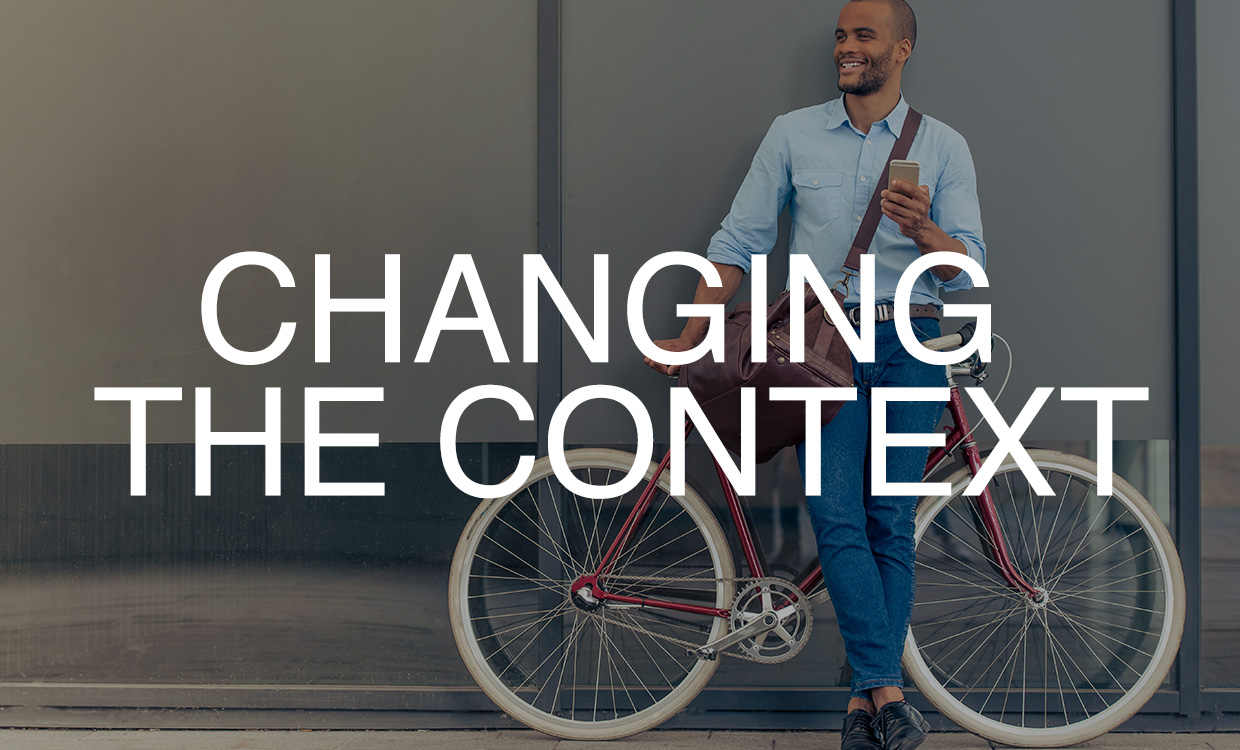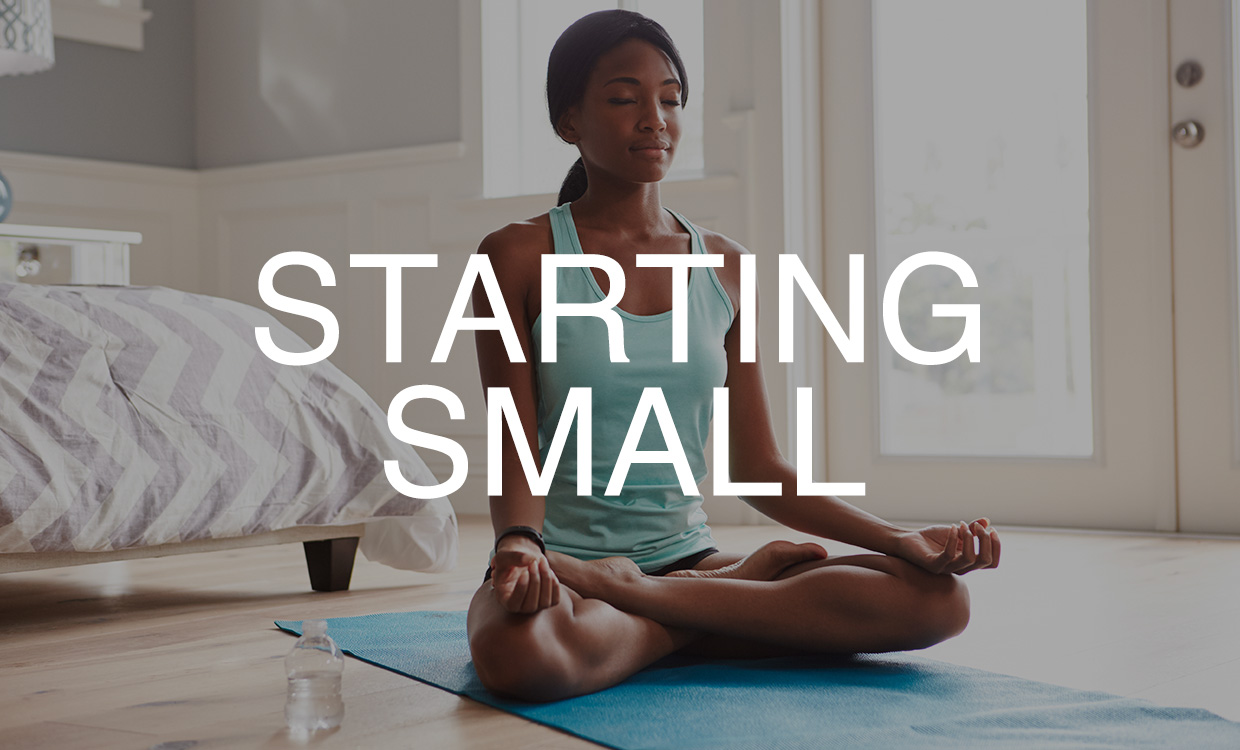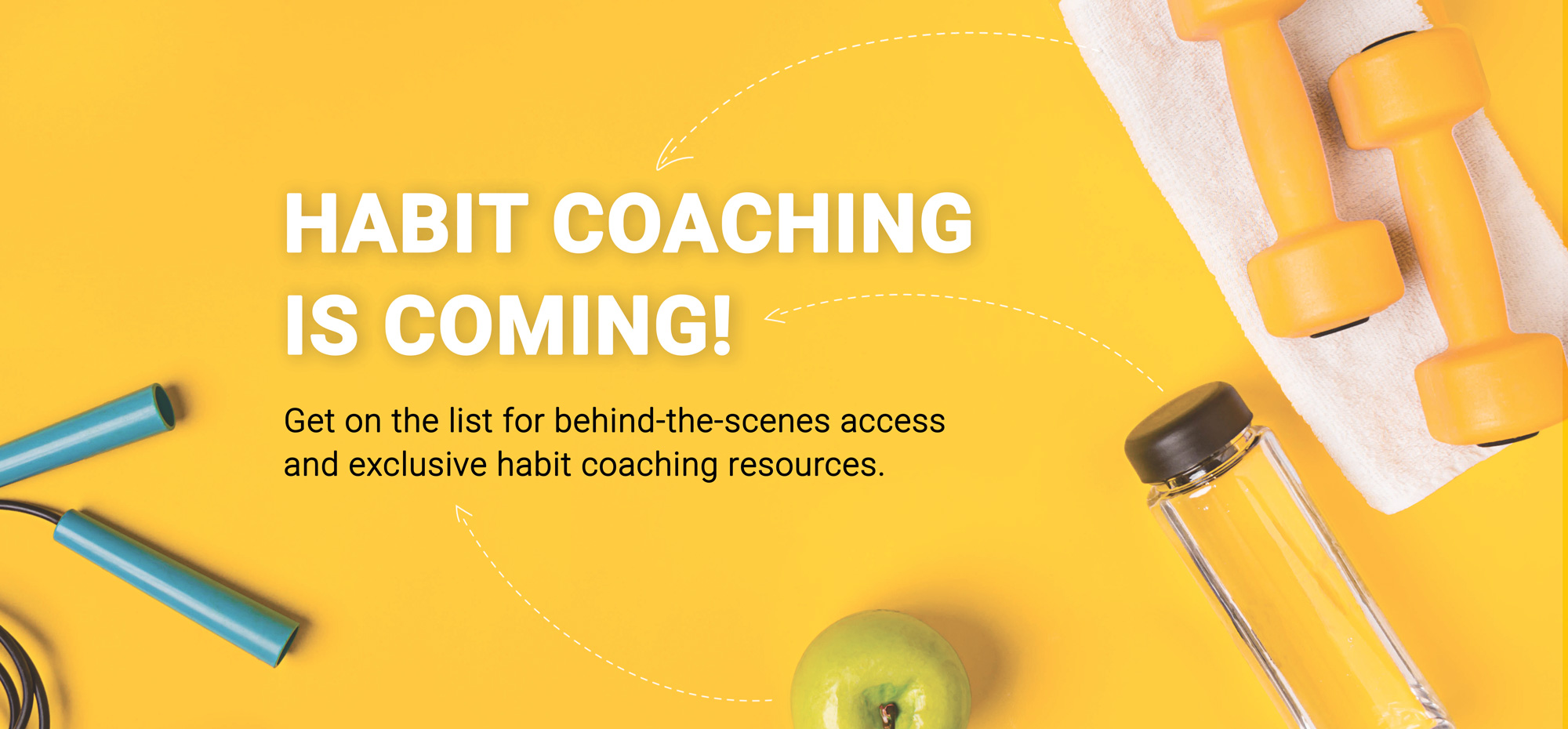If you’ve been following this series in order, you’re probably already excited to see that there are lots of ways to modify our daily actions for the better! We know that finding true motivation, harnessing the power of positive thinking, and setting implementation intentions can all help us lead happier and healthier lives.
But the study of how we both make and break habits is so deep that this installment continues that investigation and offers a few more of the top expert-recommended methods for changing behaviors.

Changing the Context
If you recall, in the very first installment of this series, we talked about the characteristics of a habit and among them was the attribute of “context”.
A context is a defined set of situational elements that act as a cue or trigger for the behavior. In a nutshell, this means that it’s not just our brains that contribute to our habitual actions, it’s also the people, places, and things we surround ourselves with.
Let’s look at an easy-to-understand example of context in action. Imagine you have a client who takes the bus to work every single day. They get on at the same stop and get off at the same stop. And it just so happens that there is a coffee shop located right next to where they get off the bus. Every morning they pop inside the café to grab a latte and inevitably end up buying a muffin, too.
It might sound like a harmless routine, but if that client is trying to stick to a nutrition plan or cut back on their sugar intake, it can do more damage than just the $8.50 bill each morning.
You might think, “so, why don’t they just walk past the coffee shop instead of going in?”, and it’s a valid question, but a solution that’s easier said than done. Once we’ve repeated these rituals to the point that they’ve become automatic (remember that automaticity is also a trademark of habits) it can be tough to make a change. The client might not even intend to go into the café, but as long as that coffee shop is just a few steps off their path to work, chances are they’ll continue their daily coffee and muffin run. It’s become a cue for the behavior.
The trick to changing that habit is to remove the cue or, in order words, change the context.
For our muffin-loving client, this might mean that they take an alternative bus route to work. (One that doesn’t drop them off in front of their favorite java joint.) Or, maybe they just get off the bus one stop earlier or one stop later and skirt around the coffee shop. There are lots of different ways to do it; all that matters is that the routine is shaken up enough that the cue disappears and any automaticity fades away too.
Psychologists have shown context change to be a very powerful method of intervention when it comes to our habits. Wendy Wood and her colleagues ran a study involving university students that measures participants’ habits both before and after they transferred to new universities.
They found that the greater the change to the students’ contexts, the larger the disruption or change to their habits. Students who had regularly exercised before their transfer, for example, were less likely to work out if their environment had changed significantly (for example, the gym was further away, their commute was longer, their class schedule was altered, etc.).
Further studies have shown that, depending on the habit and its specific cues, this change of context might not have an immediate impact on habits, but that over time, as a new context is established and becomes routine those habits will gradually peter out.
Creating a Habit Replacement Loop
This brings us to our next approach to changing habits: creating a habit replacement loop.
When we change the context for a habit, what we’re really doing is swapping it out for something different. Our client with the muffin habit, for example, still needs to get to work every morning, so when they change their route they’re not just removing something—they’re also introducing a new context.
What this means, then, is that for once, we have the opportunity to turn those intentions into something more than just “good ideas”. When we change our context we can choose to swap it out for a better one.
Pulitzer-prize winning reporter and author, Charles Duhigg explains this process in his book, The Power of Habit, noting that this powerful opportunity for change all begins with practicing self-awareness and using it to identify the habits, cues, rewards, and routines that govern our choices.
Step 1: Choosing a Habit
The first step to solving a problem is admitting you have one. It’s the same for our habits. Before we can change anything, we need to know what we’re changing and why we’re changing it.
It’s important to take some time and reflect on which habits have the biggest impact on your health and happiness since those are likely the ones you’ll want to tackle right off the bat. These habits might be so deeply ingrained in our daily lives that identifying them can be a challenge, so give it some careful thought and look objectively at the things you do on a regular basis. If you’re really stuck, recruit a friend or family member who you spend a lot of time with to help.
Step 2: Finding the cue
Picking a habit is a great start, but before you can change or swap it out, you first need to figure out the circumstances that are leading you to perform it.
For our example client from earlier, that would mean identifying that their route to work and the proximity of the coffee shop to their bus stop is contributing to their muffin habit.
To find a cue, it can be helpful to itemize everything you do in a day down to the tiny interactions and details of navigation or to start with the habit in question and then work backward through the events and activities that immediately precede it.
Cues come in all varieties and can be people, places, time, events, situations, interactions, emotions, thoughts, or words—or a combination thereof.
Step 3: Identifying the reward (a.k.a. the craving you’re satisfying)
You’ve identified the habit you want to change, and isolated the cue (or cues) that trigger it; now it’s time to dig deeper and ask yourself: what is the reward you receive whenever you execute the habit? In other words, what craving does the habit satisfy?
It may take some experimentation to figure out exactly what craving the habit is fulfilling, but just like you worked backward from the habit to isolate the cue, work forward step by step to find what you normally do after the habit.
For example, our bus-riding friend would think about how they exit the bus, head toward the office, pass the coffee shop, think about how tired they are, head inside to grab a coffee, look at the pastry case, realize they’re rather hungry, and buy a muffin.
In this example, our muffin-addict is satisfying two cravings: one for caffeine and one for food.
This is a critical step in the habit-replacement loop because whatever behavior your supplement for your pre-existing habits needs to either satisfy this same craving or deliver another reward that is positive enough to suppress the other craving.
Step 4: Creating a new routine
With your cue, habit, and craving all identified, you’ve successfully mapped out your habit loop. Now it’s time to break that cycle and create a new routine.
This is where things start to intersect with some of the other approaches to habit-changing we’ve already explored. To set up a new routine, Duhigg recommends creating an implementation intention that inserts a new behavior in the place of the previous one you want to eradicate.
And with that, you’ve completed the loop (cue, craving, reward) and set into motion a new and more positive cycle of behavior.

Starting Small
The final approach we’ll look at is one that can be used both by itself and in combination with any of the approaches to habit change we’ve already discussed. In fact, while we’ve chosen to save this method for last, it can be an excellent place to begin a journey toward positive habits: starting small.
One of the key proponents of this approach is Stanford professor and behavior change expert, BJ Fogg. According to Fogg, though it can seem intimidating, behavior change is not as complicated as it might seem. In fact, he claims there are only 15 different paths to behavior change that any individual can take, but only 2 that lead to long-term sustainable change.
First is changing your environment—a topic we discussed earlier when we looked at changing the context around specific habits. Fogg notes that this is a reliable method, but it can be a challenging one, especially because of the social elements in our environments. Moving pieces and other people can be hard to control, so instead, he recommends focusing on the second approach to long-term behavior change: making tiny changes that, over time, add up to real impact on your life, your habits, and your health.
It works something like this: say a client wants to adopt the positive habit of drinking more water. If they live their life like a cactus—rarely reaching for some H2O, it isn’t wise and probably won’t help if they set a huge goal of drinking 8 glasses of water a day. Instead, they need to make that behavior much smaller. Instead of trying to gulp more than 2 liters, they could make it a goal to instead drink at least one small glass of water each day. But that’s a bit vague and easy to forget. How will they make sure to actually do this?
Fogg recommends you take that “tiny habit” and you attach it to another pre-existing habit that you already do every day with consistent frequency—things like going to bed, going to sleep, eating a meal, taking a shower, etc. In effect, you turn that established pattern of behavior into a cue or trigger to perform the tiny habit. This way you don’t need any reminders: no alarms, no post-it notes on the fridge, no messages written on your hand. Your established routines will handle all the scheduling.
You can sum this up with a phrase similar to an implementation intention that states: after X, I will do Y. For your dehydrated client, it might be: after I wake up, I will drink a glass of water.
Fogg explains that we aren’t breaking big behaviors down into tiny pieces because we’re unable to perform a positive habit in its entirety (for example: we likely already know how to drink water or how to floss our teeth); we’re doing it because tiny actions are easier to do, they don’t require much motivation, and most importantly they’re really easy to repeat and when we repeat them we build automaticity, which, as we already know, is a key component of habits.
But Fogg’s tiny habits approach doesn’t just end there. He takes things one step further encouraging us to celebrate each time we successfully tack the tiny habit onto our existing routines. You could say a positive affirmation or exclamation, like, “I’m awesome!” or “Bingo!” or do a little victory dance after completing the tiny habit. The only requirement is that it reaffirms what you’re doing right.
So why is this method so effective and most likely to yield lasting results? If you ask Fogg, he’ll give you 4 reasons.
First, it isn’t solely reliant on motivation—in fact, Fogg says that relying on motivation alone to change your behavior long-term is a losing strategy since motivation can easily change or fade. Second, it also has very little to do with willpower—a resource that is also sure to run out eventually. Third, it’s something everyone can do—it’s taking something big and overwhelming and making it manageable. And fourth and finally, by using this approach we’re not focusing on hypothetical or optimistic outcomes, we’re focusing on behaviors and those are things we can actually control.
All you have to do is start small.
In the next installment, we’re digging into how we can stick to our guns and maintain the good habits we want to adopt.
References
Changing Circumstances, Disrupting Habits by W. Wood, L. Tam, & M.G. Witt
The Power of Habit by Charles Duhigg
Forget big change, start with a tiny habit: BJ Fogg at TEDxFremont via YouTube
Tiny Habits by BJ Fogg
UP NEXT | PART 5: Sustaining Habits
#SmallChangesBigResults


